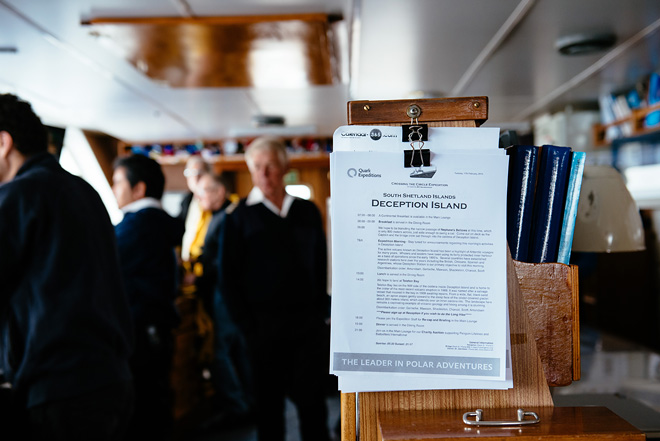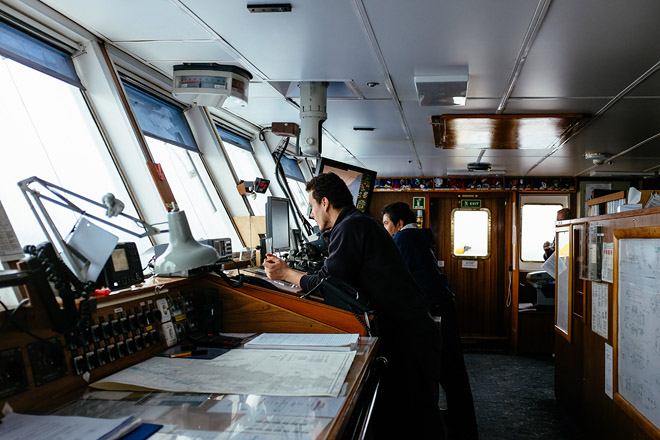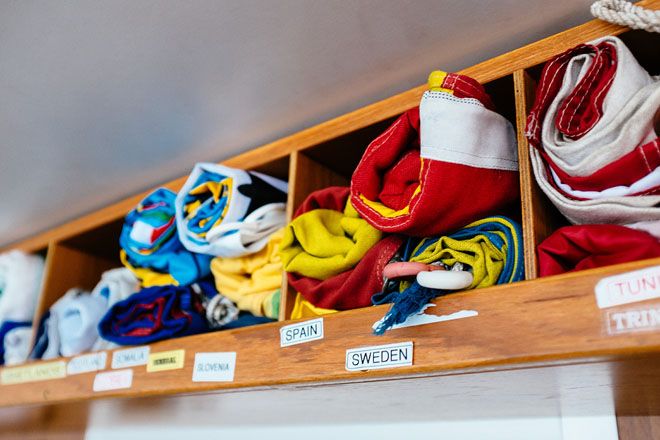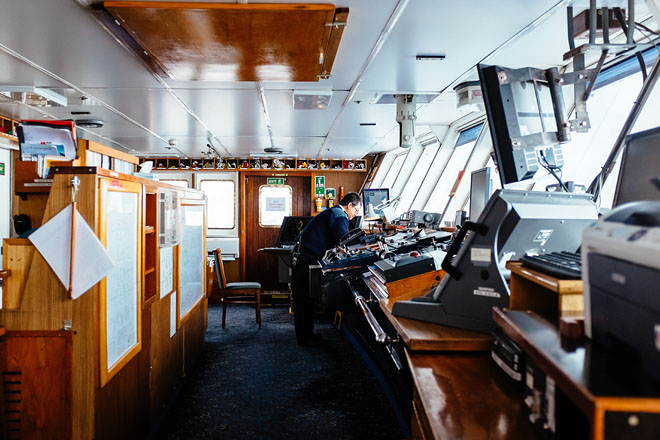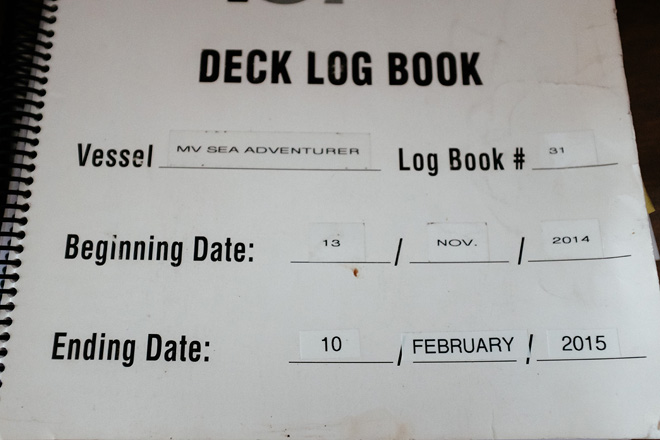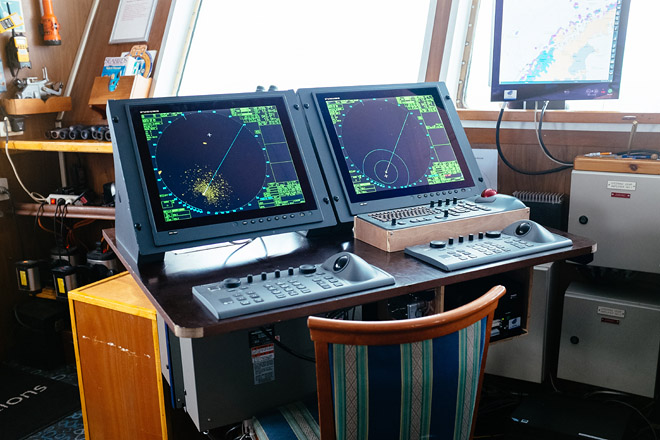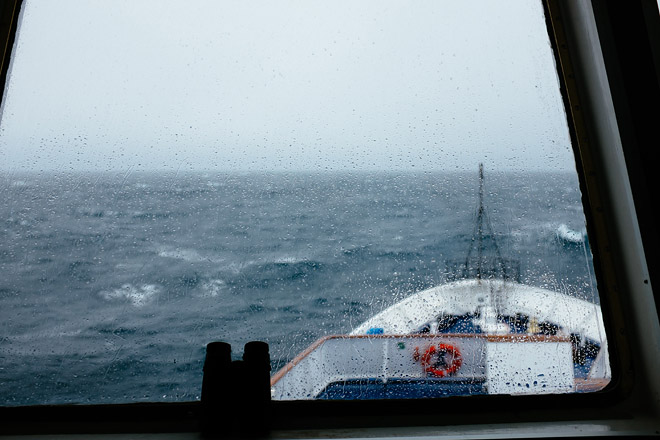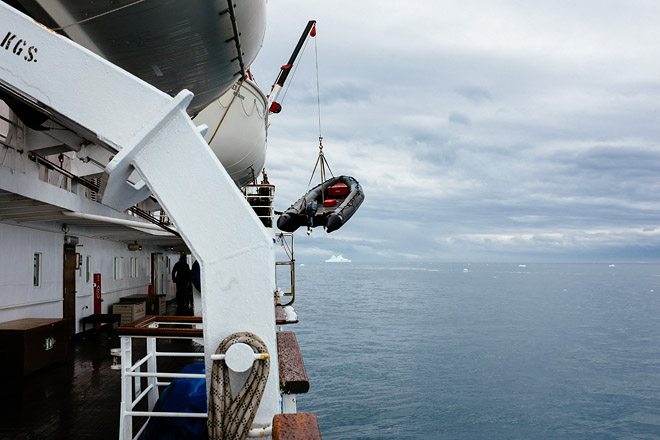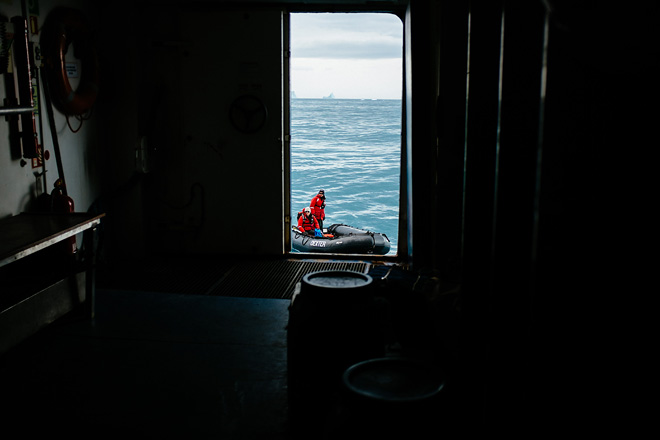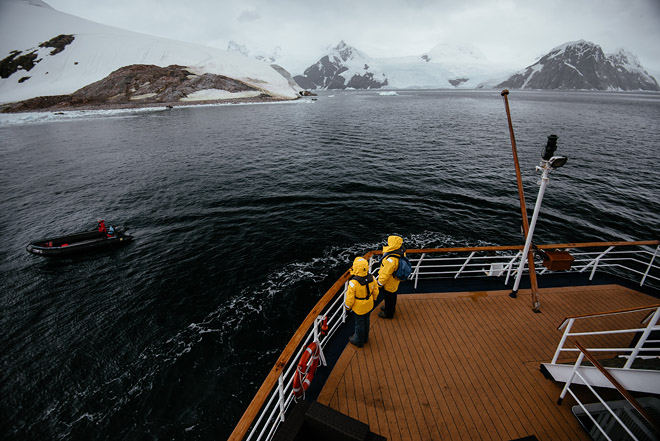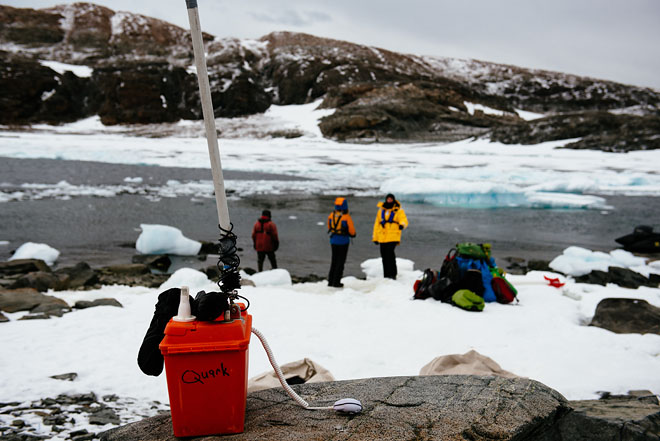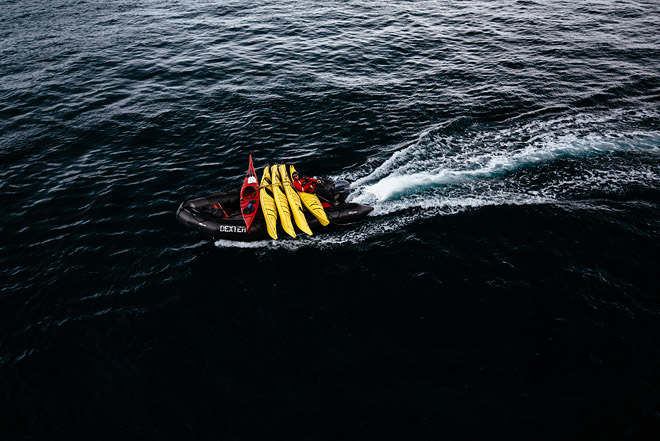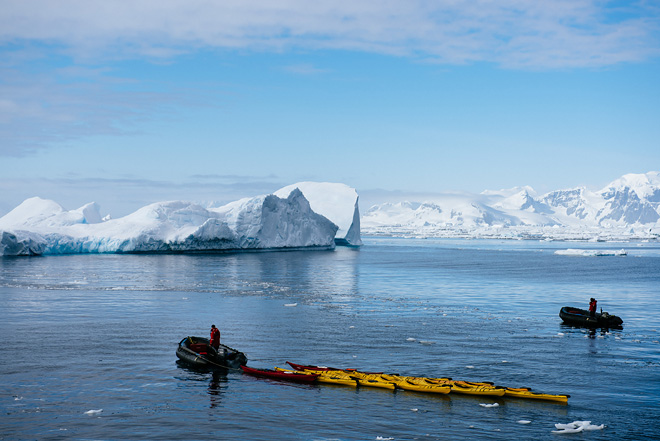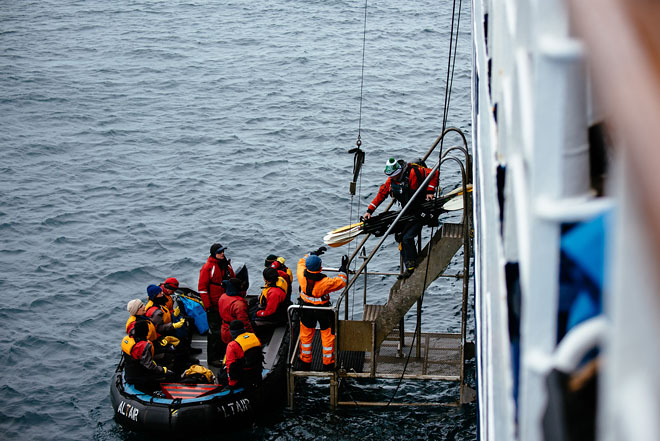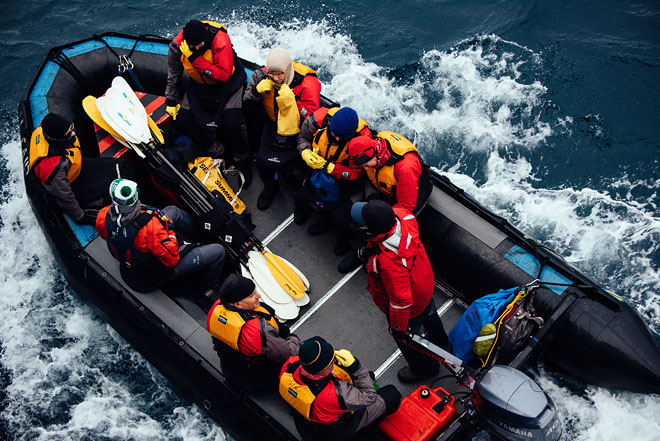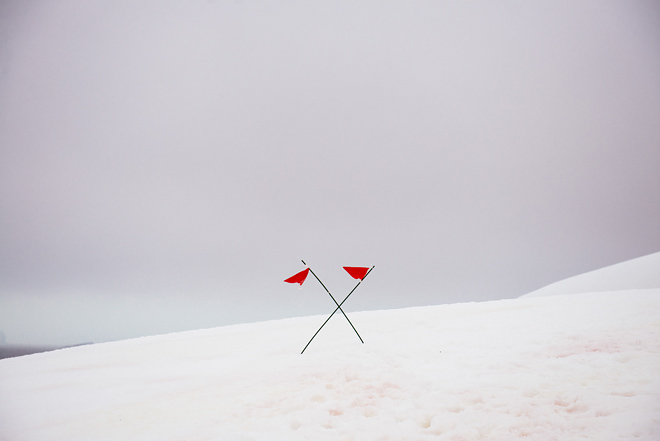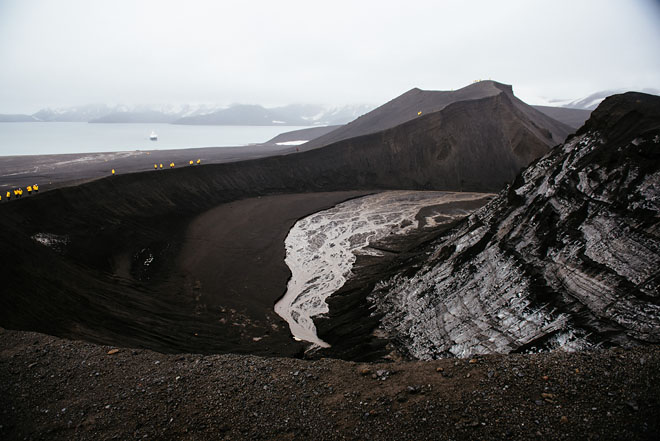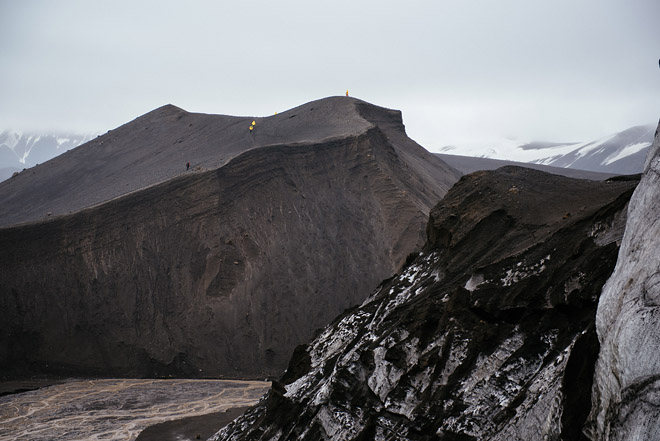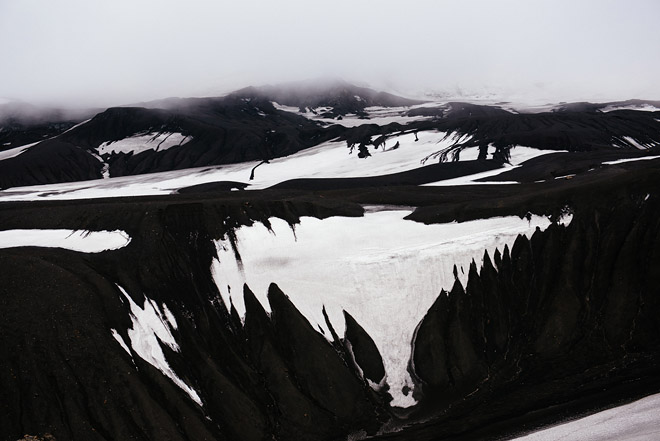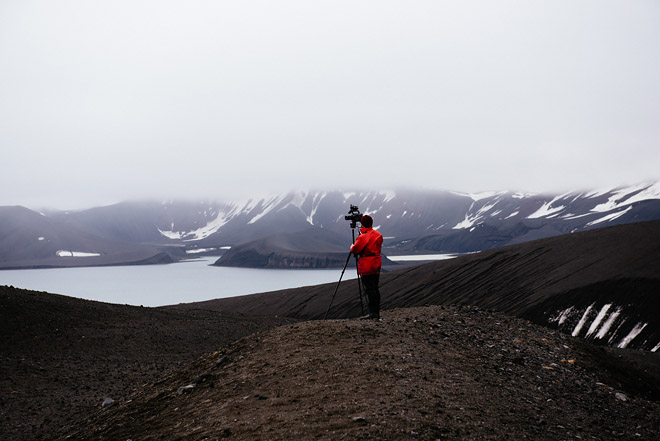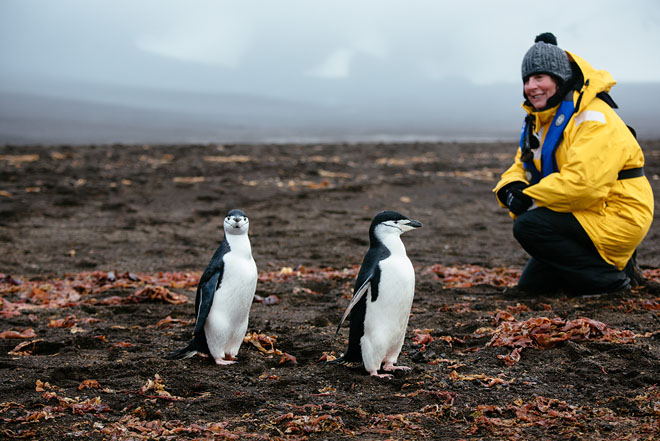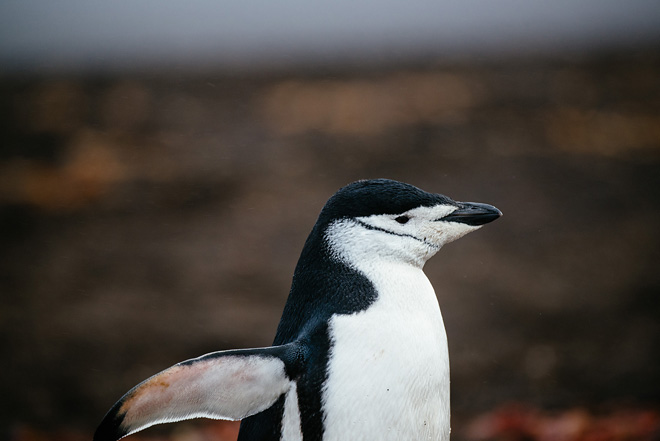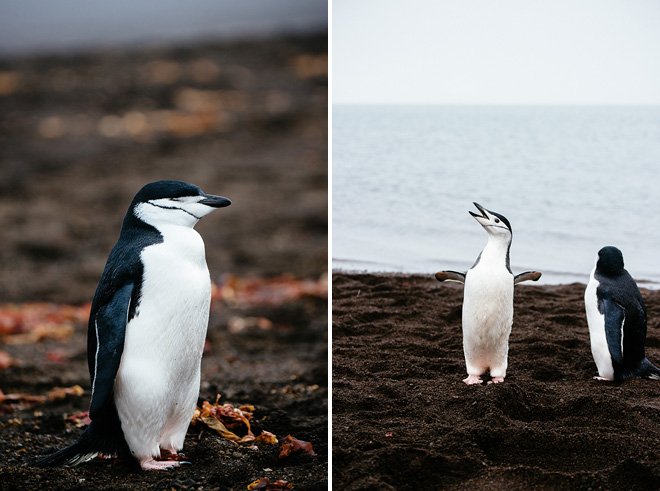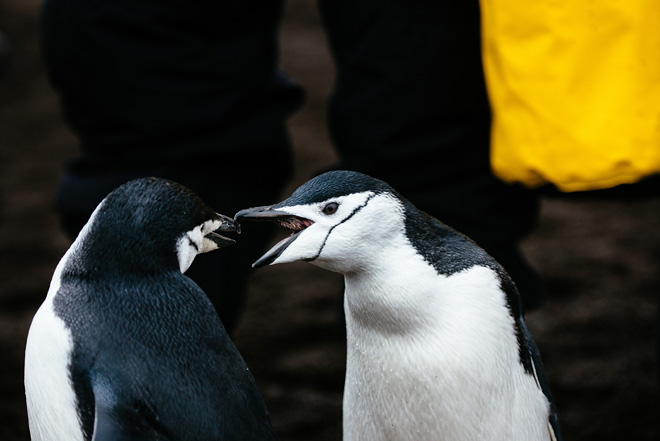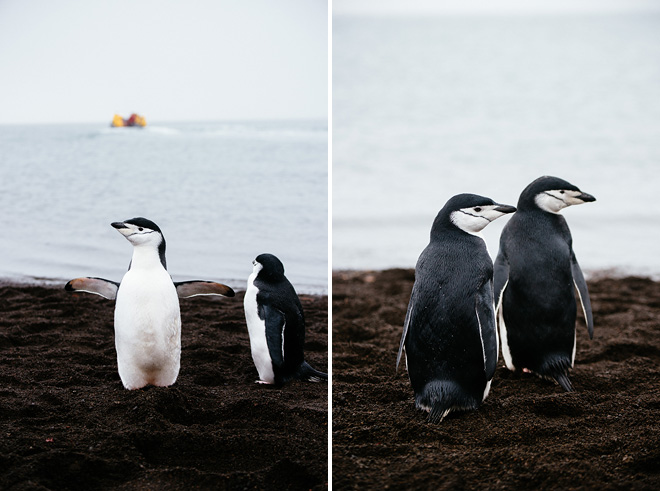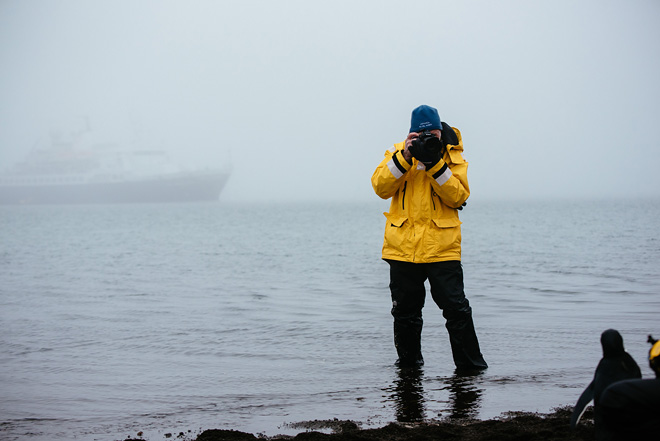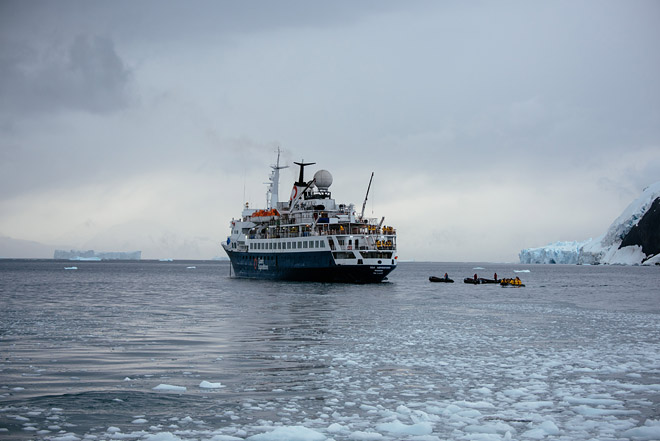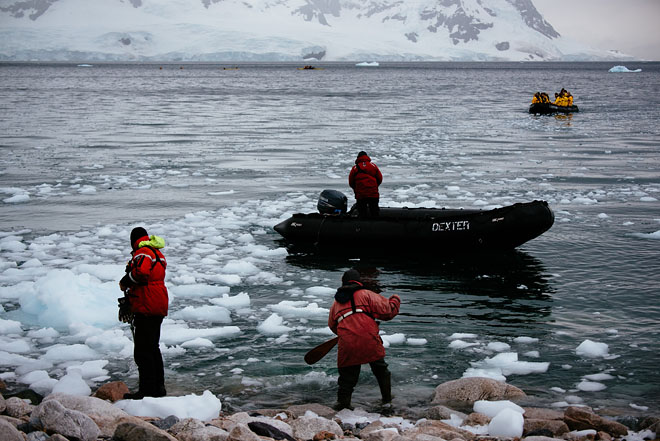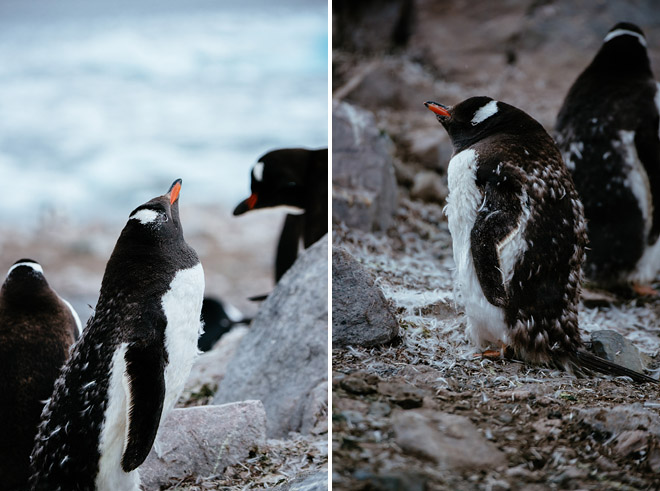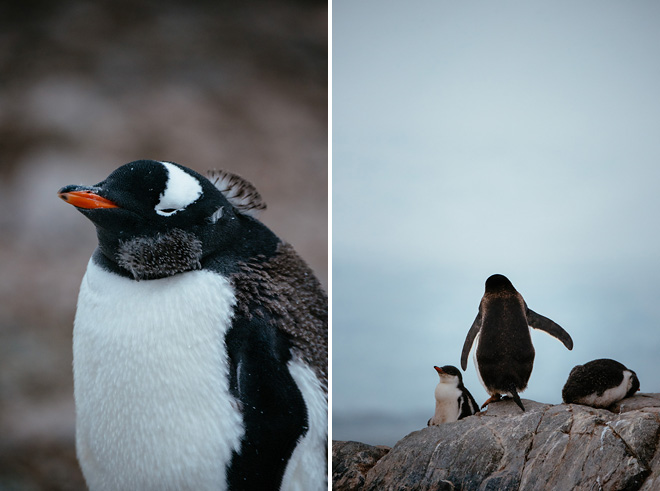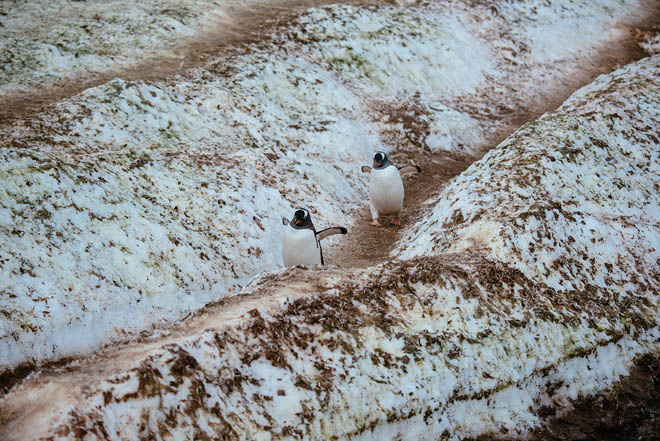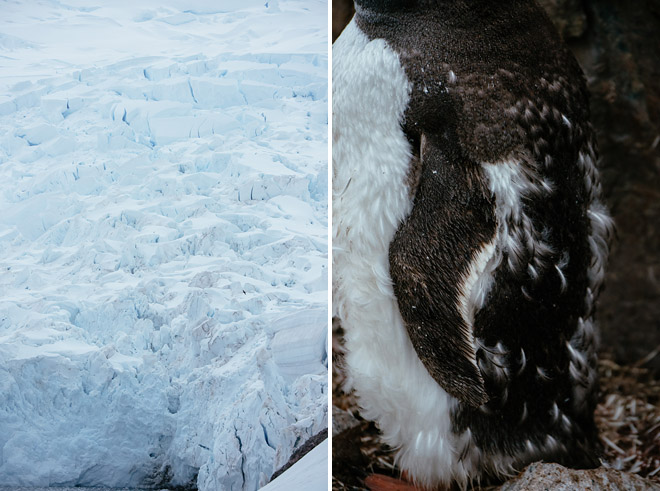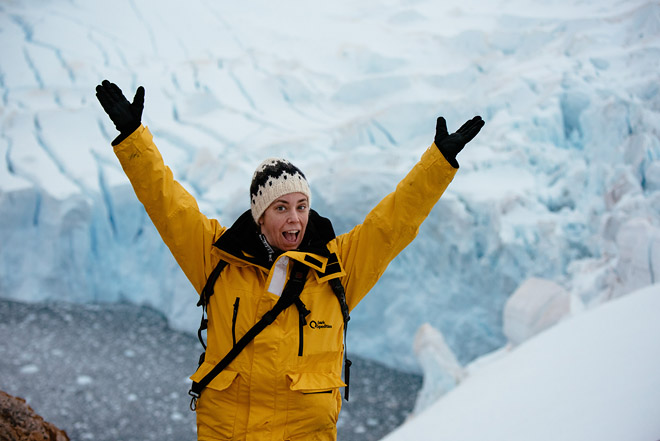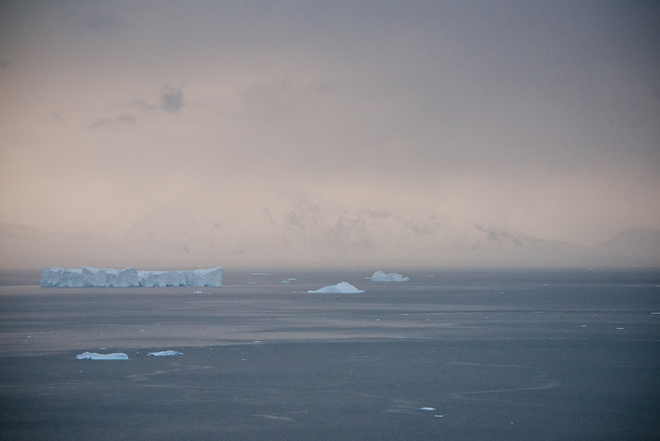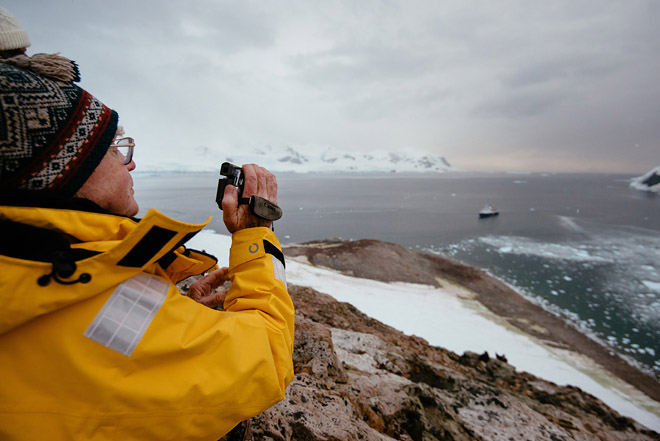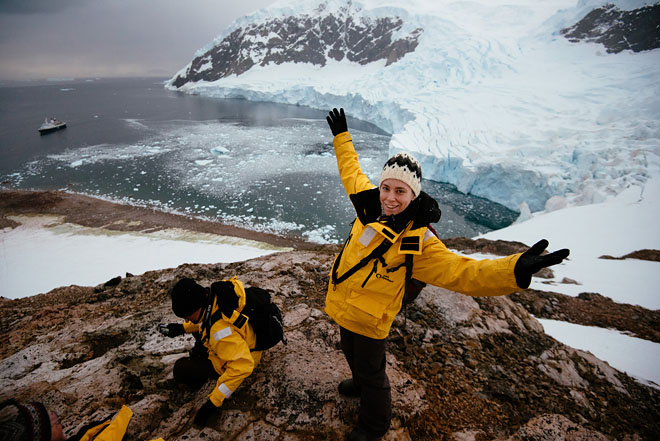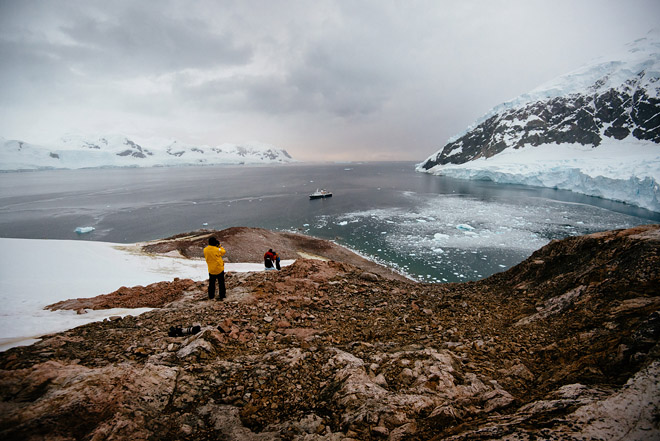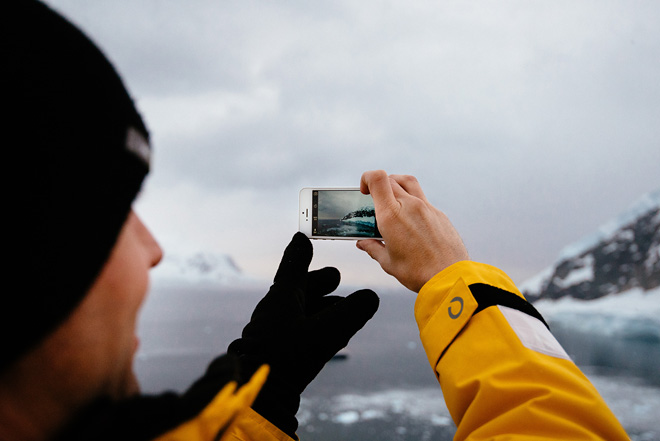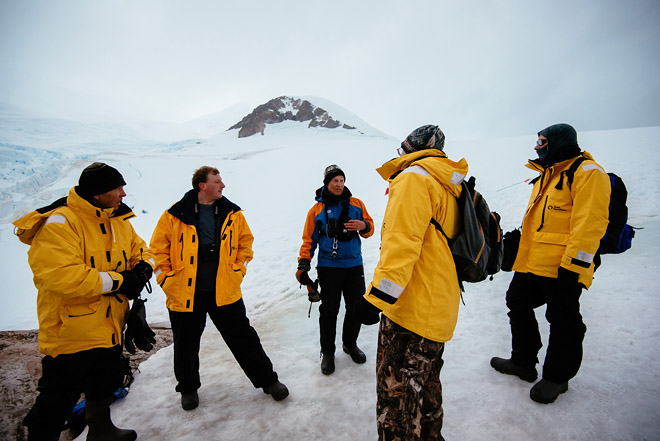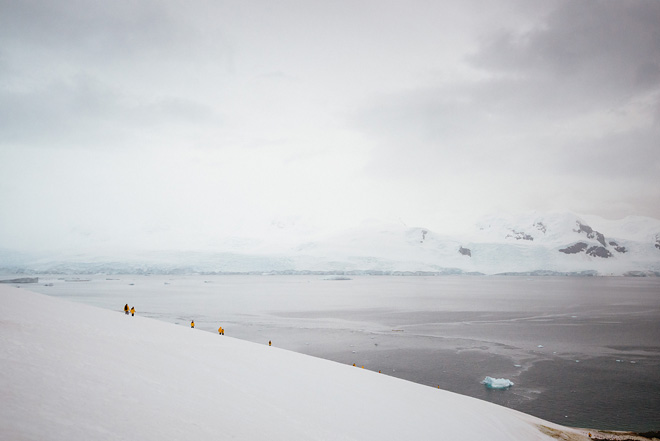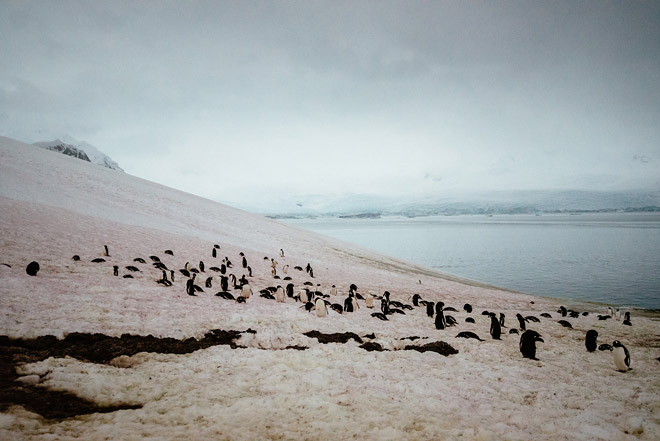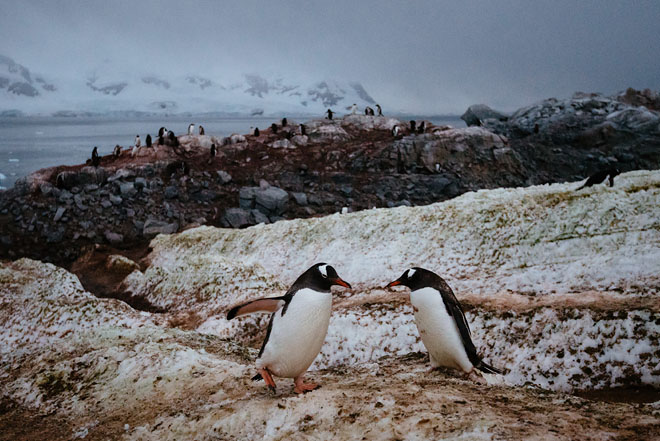Morning of day 9—our last day of landings. SO BITTERSWEET.
We had two landings scheduled at Deception Island—one in the morning and one in the afternoon.
Deception Island is the caldera of an active volcano. It erupted in 1967 and 1969. It looks all black, but it’s still ice, it’s just covered in volcanic ash. You can kick through the ash an inch or two and see the ice.
There’s an Argentinian research station here, and that was the site of our morning landing. We had the option to hike up to the top of the ridge of the caldera, where we would be able to look down to the other side to see a colony of 50,000 pairs of chinstrap penguins. ONE HUNDRED THOUSAND CHINSTRAP PENGUINS.
But first, we had to sail into the caldera, through a narrow channel (only 850 feet wide) called Neptune’s Bellows. The ship had an open bridge policy, which meant you could go in and visit it at any time, watching the captain and his team sail the ship. Even when navigating such a tricky channel, the captain kept the bridge open, they just asked that visitors please not talk while the captain got us through here.
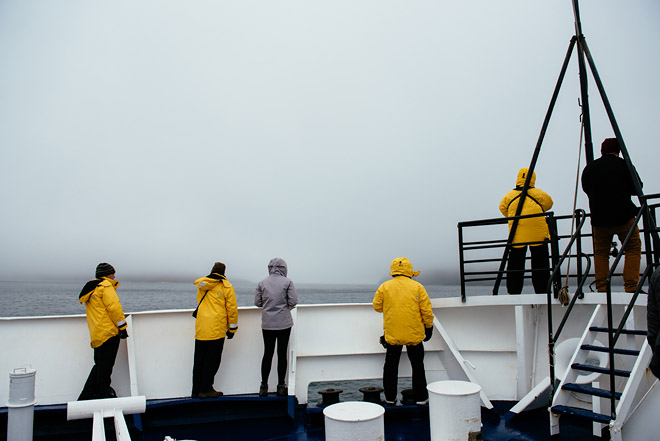
It was a very foggy morning–the clouds hung really low in the sky. Most of us were out on deck to watch us sail through Neptune’s Bellows.

What the flight map looks like when you’re anchored in a caldera
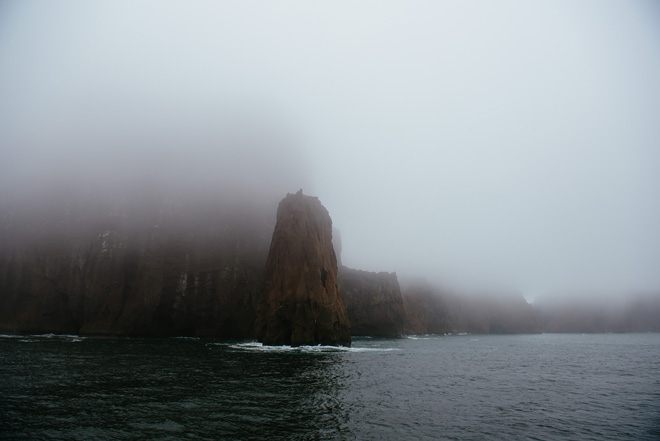

Sailing very close to these cliffs.

And then we anchored and headed to shore in the zodiacs. This fur seal was waiting there to greet us.

The kayakers can be seen in the distance. During lunch, the ship would be repositioning to the other side of the caldera for our afternoon landing. The kayakers, instead of taking the ship, kayaked from this landing site to the other one. I think the idea of it was better than the reality of it—it sounded like it turned out to be a very difficult kayaking trip, cold and wet and challenging. But they can say they did it, right guys?
You can also see the steam rising from the ground.
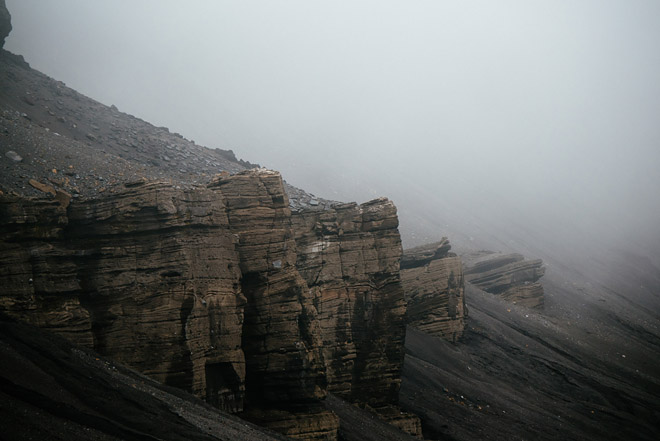

We hiked up. And up. And up. And here Laurie, our guide, grabbed a quick photo.
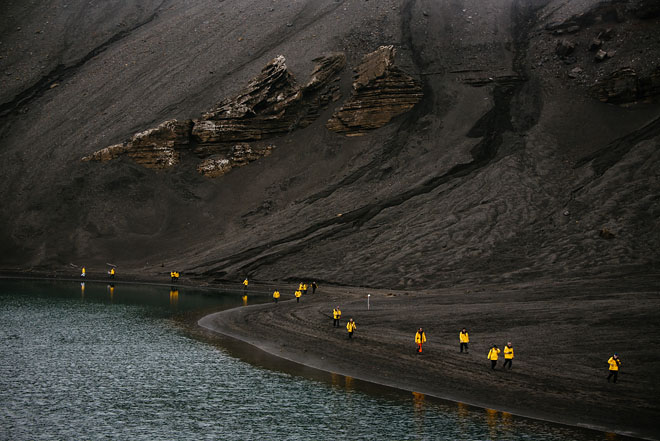
The Quark penguins again.

The higher we hiked, the worse the visibility became. We were hoping that as the morning went on, the fog would lift, but it seemed to be getting worse, if anything. We hiked until we had almost zero visibility. It was hard to see people more than a few feet away. At that point, we decided it was pointless to go on—the goal was to see the penguin colony, and there was no way we were going to be able to see it in these conditions. No penguins!!! So sad.

We stopped and took a few photos of each other before turning around to go back down.
At this point, I was super disappointed. There had been a chinstrap or two at a couple of our other landings, but I had not seen them. I’d only heard other people talking about them or seen their photos of them. I really wanted to see one for myself. Even though I’d seen tons of other penguins, the chinstrap was the one type I could identify prior to this trip, so I really had been hoping to see one. Our afternoon landing, they’d already told us, was just more caldera, no wildlife. Bittersweet.
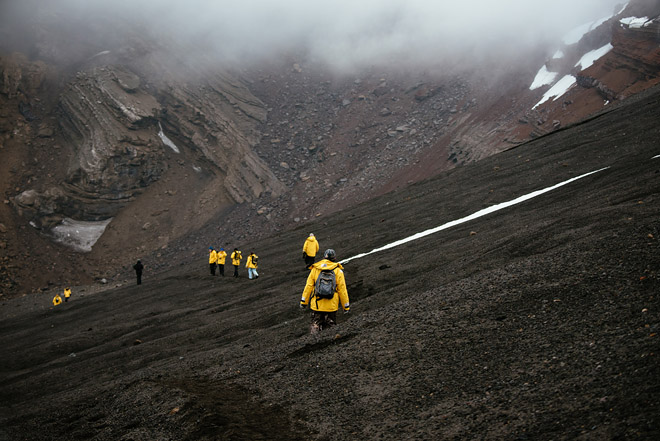
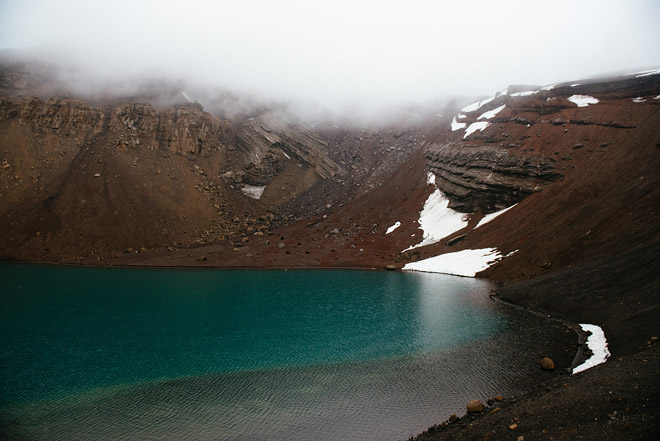

The research base. The Argentinians invited us in and had drinks and cookies set out for us. I tried to take a some photos inside but it was so warm compared to outside my lens completely fogged up, so I got nothing. It also got hot in there pretty fast in all my clothes, so I didn’t stay inside much longer than it took me to eat a couple of cookies.
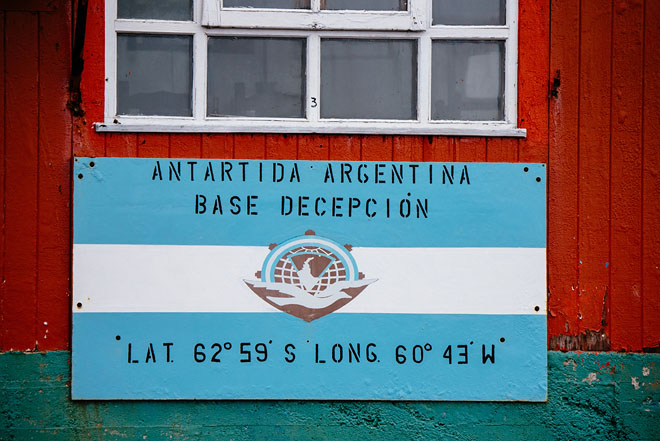

Alex told us about a time a few years ago when they’d been anchored across the caldera, and someone called to them on their radio, asking, “Who is in that blue ship?” They identified themselves, and the Argentinians identified themselves and asked, “Do you have any cigarettes?” And they did, so they went over and visited them at the research station and have been visiting them ever since.

Time to go back to the ship.
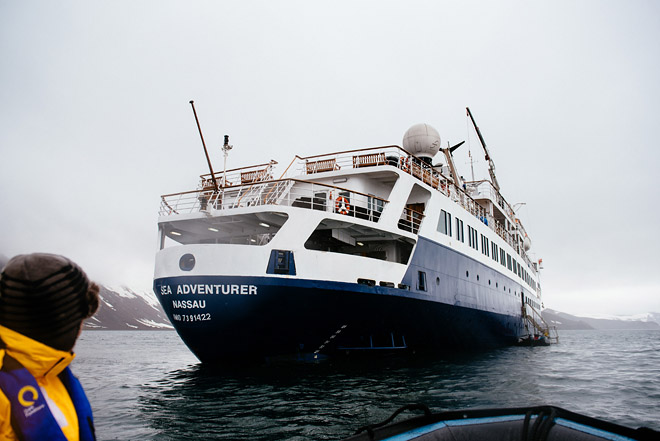

Back on the ship, I realized that I hadn’t done my favorite trick of taking a photo of a scene through my phone, so I did that real quick. Since I had no internet on the ship, I didn’t use my phone at all, basically, for two weeks. I had thought I might use it as an alarm clock, but Alex’s wake-up calls over the PA system were all I needed, so my phone mostly just sat next to my bed, unused.
So then we ate lunch while the ship repositioned across the caldera for our afternoon landing. Next up: Telefon Bay.
